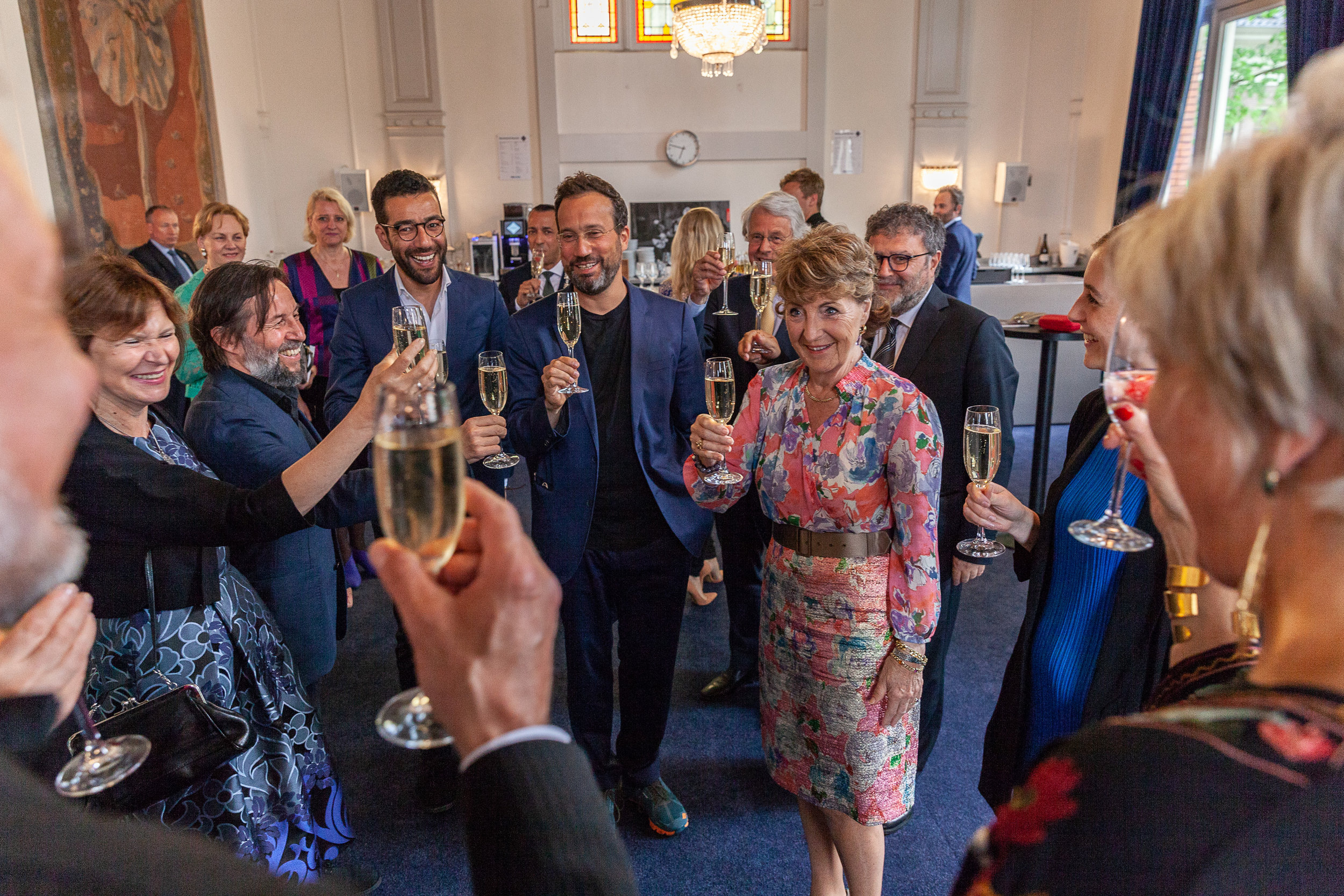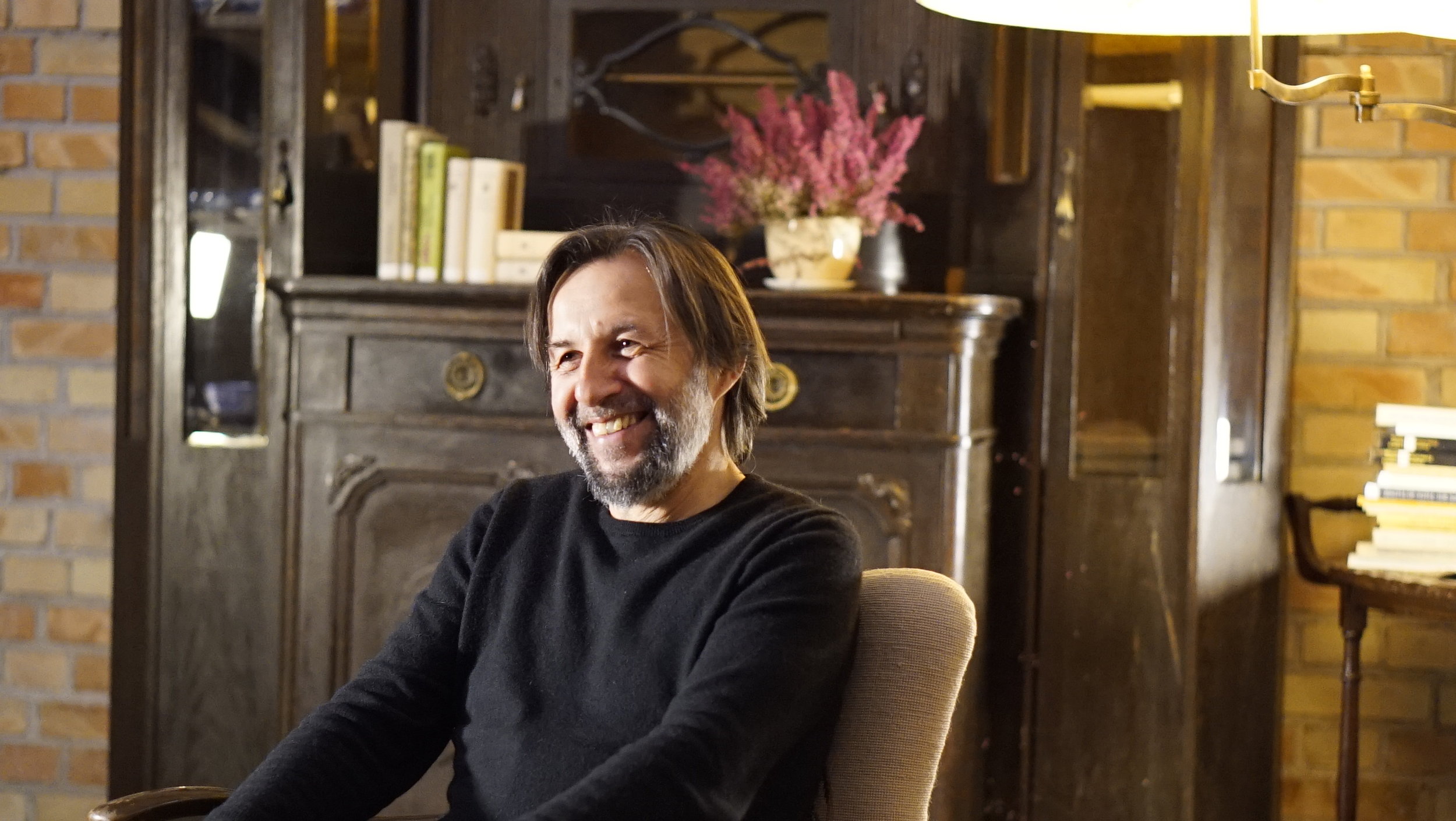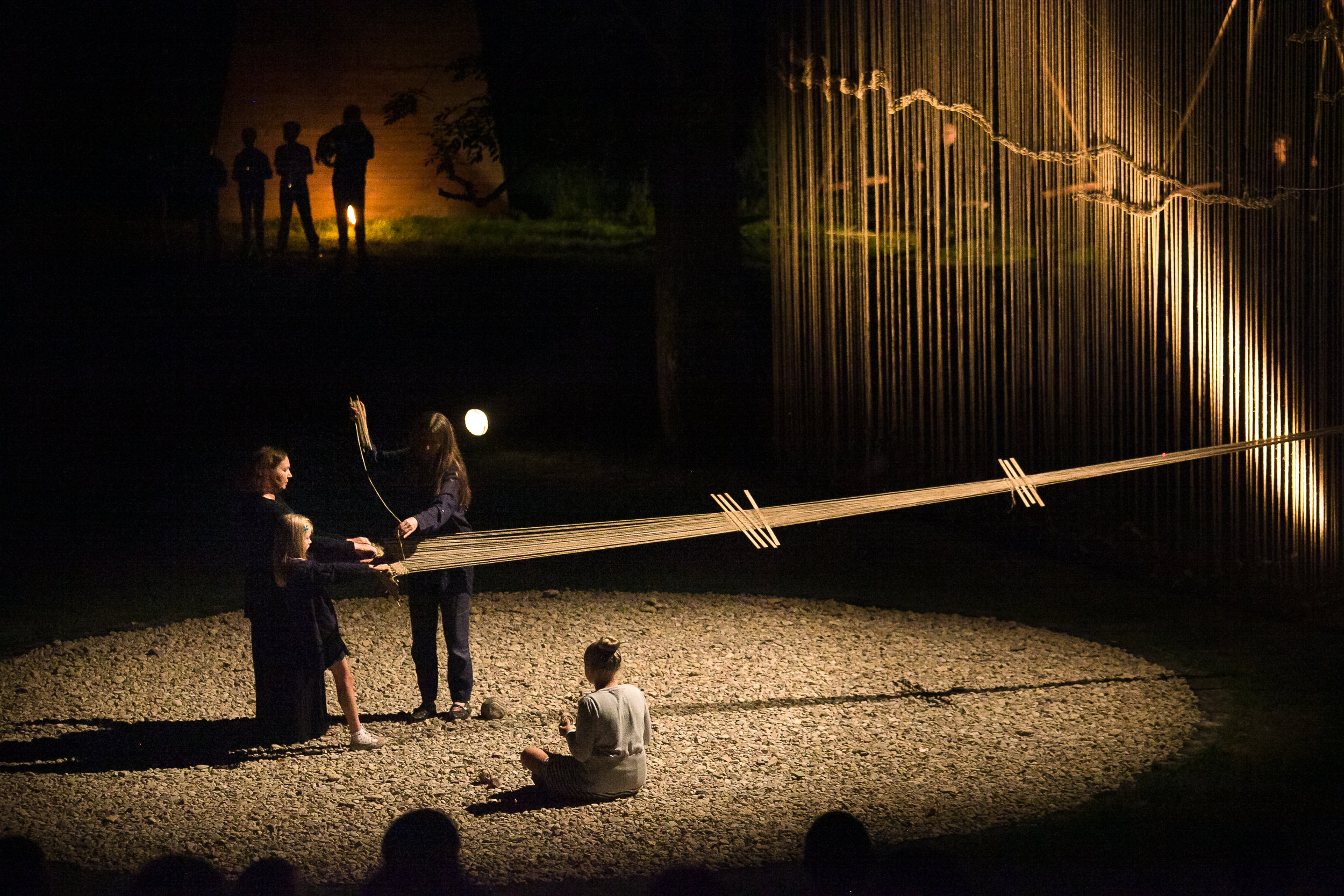
The team of Visual Culture Research Center, Kiev. Photo ©Oleksandr Techynskyi
The Visual Culture Research Center in Ukraine is one of two courageous cultural initiatives in Europe to be selected for the 2015 Princess Margriet Award for Culture. At a time of unprecedented political turmoil in Ukraine, the centre provides a much-needed meeting ground for social activism and progressive artistic programming that is making a remarkable contribution to sustaining cultural debate across Ukraine and the region.
The Visual Culture Research Center (VCRC) was founded in 2008 in the Ukraine capital of Kiev as a platform for collaboration between academics, artists and activists.
The centre’s primary aim is to create an interdisciplinary environment that makes a contribution towards a more nuanced understanding of post-Soviet life in Ukraine through the lens of art and culture. Led by a dynamic and engaged group, the centre succeeds in connecting diverse Ukrainian and international audiences to develop art and critical cultural thinking that can equip us with the skills of open-mindedness and a powerful imagination – skills that are so vital to progressive democratic society.
Since it was launched in 2008, VCRC has organised numerous debates, research seminars, conferences, exhibitions and actions in public space. It is a self-organised initiative that aims to create a productive environment for the interaction between engaged knowledge, critical art and grassroots politics. VCRC reacts to the needs and problems of the local context from a global perspective. The activities of the centre usually deal with the issues that are silenced or misrepresented in public debates, both in mainstream and professional circles.
Behind VCRC is a group of young academics, publicists, artists and students including: Oksana Briukhovetska, Vasyl Cherepanyn (Director), Anna Kravets, Oleksiy Radynski, Kateryna Ruban, Nazariy Sovsun, Serhiy Klymko, Lesia Kulchynska, Nataliia Neshevets and Yustyna Kravchuk.
In 2010, Oleksiy Radynski and Vasyl Cherepanyn also started the Ukrainian edition of Political Critique magazine, published by VCRC, which provides a further space for supranational exchange on cultural debates in Ukraine. The editorial board consists of VCRC team along with the broader circle of left-wing activists.
In 2012, VCRC was ousted from Kyiv-Mohyla Academy by its scientific council, which deemed the centre’s activities to be ‘non-scientific’. VCRC now operates as an independent non-academic educational, artistic and political initiative.
The administration of the Academy started to persecute the VCRC soon after shutting down a 2012 exhibition called Ukrainian Body, which brought together works by 17 politically engaged artists from Ukraine. During the media outcry surrounding the exhibition and subsequent closure of the centre, art became the subject of heated debate that spread far beyond the usual artistic circles. A petition calling for “the restoration of academic and artistic freedom” was launched and signed by prominent artists and academics.
Watch a video about the exhibition and its closure:
Beyond Ukrainian Body
“The fear of war, the feeling of uncontrollability of (geo-)political processes turned the city out of the space of possibilities and public interaction into a network of potential refuges.”
Since 2012, in spite of its official closure and the very difficult political situation in Ukraine, VCRC has continued to play an active role in the country’s cultural sector. Many activists and members of VCRC were deeply involved in the protests that took place in Ukraine between November 2013 and May 2014. During the occupation of Maidan, VCRC was involved in organising debates, film screenings and lectures that provided context for political discussions, giving access to different points of view and critical approaches. You can read an interview with VCRC Director Vasyl Cherepanyn here about the centre’s role in the Maidan movement.
In 2014, VCRC responded to announcements about bomb shelter location plans that appeared on the information boards of government institutions in Kiev with a series of exhibitions organised as part of a project called Unrendered Spaces. As VCRC explained, “The fear of war, the feeling of uncontrollability of (geo-)political processes turned the city out of the space of possibilities and public interaction into a network of potential refuges.”
At the end of 2014, VCRC organised an exhibition called Lockout in their new gallery space. The exhibition referred to temporary work stoppages and termination of wages initiated by employers during strikes and labour disputes – a practice that is illegal in many countries but not in Ukraine. The curators considered this phenomenon to be a metaphor of the social situation in the post-socialist world. A lockout attacks workers before they are ready to fight for their rights and transforms workplaces into abandoned mines and closed factories – leading in turn to a lack of jobs, poverty and social vulnerability. Critical art works from Poland, Russia, Ukraine and Hungary revealed the hidden, or invisible, reality of labour as one of the most routine and important aspects of human life.
In the face of many practical and logistical challenges, VCRC continues to actively initiate a cross-border platform for cooperation between related initiatives, groups and institutions in Ukraine, the region and across Europe. At the time of writing, VCRC is working with various initiatives – from the Erste Stiftung to the Institut Français in Ukraine to organise events and exhibitions on a range of subjects – from how to achieve gender equality in politics to the evolution of utopian thinking in the theory and practice of Soviet urban planning.
VCRC also organises a continuous discursive programme of events that includes an impressive line up of speakers from around the world – from Russian art historian and art director of the Academy of the Arts of the World in Cologne Ekaterina Degot to Russian performance artist Pyotr Pavlensky to American philosopher, cultural historian and literary theoretician Hans Ulrich Gumbrecht from Stanford University in California.
You can read more about VCRC’s continuous programme of events and exhibitions on their website. Or visit their Facebook page (mostly in Ukrainian).
Further resources
- You can read more background information about the cultural situation in Ukraine in the Ukrainian edition of Political Critique magazine.
- Read an article about the closure of the Ukrainian Body exhibition from the New York Times magazine here.
- ECF has launched Radical Agoras, a new lab that’s part of our ECF Labs, which aims to understand the cultural and political contexts in which the 2015 ECF Princess Margriet Award laureates work, and to open up a broader conversation about culture in times of conflict and crisis. Join the conversation online.


























































